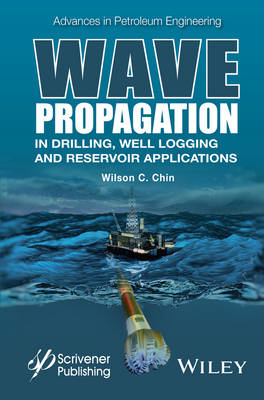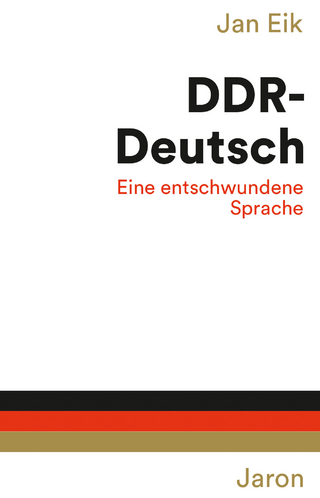
Wave Propagation in Drilling, Well Logging and Reservoir Applications
Wiley-Scrivener (Verlag)
978-1-118-92589-8 (ISBN)
- Titel z.Zt. nicht lieferbar
- Versandkostenfrei innerhalb Deutschlands
- Auch auf Rechnung
- Verfügbarkeit in der Filiale vor Ort prüfen
- Artikel merken
Delivers drillstring vibrations models coupling axial, torsional and lateral motions that predict rate-of-penetration, bit bounce and stick-slip as they depend on rock-bit interaction and bottomhole assembly properties,
Explains why catastrophic lateral vibrations at the neutral point cannot be observed from the surface even in vertical wells, but providing a proven method to avoid them,
Demonstrates why Fermat's "principle of least time" (used in geophysics) applies to non-dissipative media only, but using the "kinematic wave theory" developed at MIT, derives powerful methods applicable to general attenuative inhomogeneous media,
Develops new approaches to mud acoustics and applying them to MWD telemetry modeling and strong transients in modern swab-surge applicagtions,
Derives new algorithms for borehole geophysics interpretation, e.g., Rh and Rv in electromagnetic wave and permeability in Stoneley waveform analysis, and
Outlines many more applications, e.g., wave loadings on offshore platforms, classical problems in wave propagation, and extensions to modern kinematic wave theory.
These disciplines, important to all field-oriented activities, are not treated as finite element applications that are simply gridded, "number-crunched" and displayed, but as scientific disciplines deserving of clear explanation. General results are carefully motivated, derived and applied to real-world problems, with results demonstrating the importance and predictive capabilities of the new methods.
Wilson C. Chin, who earned his Ph.D. at M.I.T., has published ten books on original oilfield research, and over one hundred papers and forty patents in well logging and petroleum engineering. He has collaborated with leading companies and universities worldwide and worked extensively in high-data-rate MWD design and advanced electromagnetic algorithm development.
Preface xxi
Acknowledgements xxiii
1 Overview and Fundamental Ideas 1
1.1 The Classical Wave Equation 2
1.2 Fundamental Representation 7
1.3 Separation of Variables and Eigenfunction Expansions 8
1.4 Standing Versus Propagating Waves 16
1.5 Laplace Transforms 20
1.6 Fourier Transforms 26
1.7 External Forces Versus Boundary Conditions 30
1.8 Point Force and Dipole Wave Excitation 42
1.9 First-Order Partial Differential Equations 46
1.10 References 49
2 Kinematic Wave Theory 50
2.1 Whitham's Theory in Nondissipative Media 51
2.2 Simple Attenuation Modeling 57
2.3 KWT in Homogeneous Dissipative Media 60
2.4 High-Order Kinematic Wave Th eory 64
2.5 Effect of Low-Order Nonuniformities 70
2.6 Three-Dimensional Kinematic Wave Theory 76
2.7 References 80
3 Examples from Classical Mechanics 82
3.1 Example 3-1. Lateral Vibration of Simple Beams 82
3.2 Example 3-2. Acoustic Waves in Waveguides 85
3.3 Example 3-3. Gravity-Capillary Waves in Deep Water 96
3.4 Example 3-4. Fluid-Solid Interaction – Waves on Elastic Membranes 100
3.5 Example 3-5. Problems in Hydrodynamic Stability 104
3.6 References 106
4 Drillstring Vibrations: Classic Ideas and Modern Approaches 109
4.1 Typical Downhole Vibration Environment 110
4.2 Axial Vibrations 123
4.3 Lateral Bending Vibrations 184
4.4 Torsional and Whirling Vibrations 216
4.5 Coupled Axial, Torsional and Lateral Vibrations 227
4.6 References 248
5 Mud Acoustics in Modern Drilling 257
5.1 Governing Lagrangian Equations 258
5.2 Governing Eulerian Equations 267
5.3 Transient Finite Diff erencing Modeling 272
5.4 Swab-Surge Modeling 275
5.5 MWD Mud Pulse Telemetry 278
5.6 Recent MWD Developments 294
5.7 References 303
6 Geophysical Ray Tracing 306
6.1 Classical Wave Modeling – Eikonal Methods and Ray Tracing 307
6.2 Fermat’s Principal of Least Time (via Calculus of Variations) 310
6.3 Fermat’s Principle Revisited Via Kinematic Wave Th eory 312
6.4 Modeling Wave Dissipation 313
6.5 Ray Tracing Over Large Space-Time Scales 317
6.6 Subtle High-Order Eff ects 320
6.7 Travel-Time Modeling 324
6.8 References 329
7 Wave and Current Interaction in the Ocean 331
7.1 Wave Kinematics and Energy Summary 331
7.2 Sources of Hydrodynamic Loading 334
7.3 Instabilities Due to Heterogeneity 334
7.4 References 337
8 Borehole Electromagnetics - Diffusive and Propagation Transients 338
8.1 Induction and Propagation Resistivity 339
8.2 Conductive Mud Eff ects in Wireline and MWD Logging 344
8.3 Longitudinal Magnetic Fields 346
8.4 Apparent Anisotropic Resistivities for Electromagnetic Logging Tools in Horizontal Wells 349
8.5 Borehole Eff ects – Invasion and Eccentricity 356
8.6 References 357
9 Reservoir Engineering – Steady, Diff usive and Propagation Models 358
9.1 Buckley-Leverett Multiphase Flow 358
9.2 References 366
10 Borehole Acoustics - New Approaches to Old Problems 367
10.1 Stoneley Waves in Permeable Wells - Background 368
10.2 Stoneley Wave Kinematics and Dynamics 372
10.3 Eff ects of Borehole Eccentricity 384
10.4 References 391
Cumulative References 394
Index 410
About the Author 419
| Reihe/Serie | Advances in Petroleum Engineering |
|---|---|
| Sprache | englisch |
| Maße | 164 x 243 mm |
| Gewicht | 758 g |
| Themenwelt | Geisteswissenschaften ► Geschichte |
| Naturwissenschaften ► Physik / Astronomie | |
| Technik ► Bergbau | |
| Technik ► Elektrotechnik / Energietechnik | |
| ISBN-10 | 1-118-92589-0 / 1118925890 |
| ISBN-13 | 978-1-118-92589-8 / 9781118925898 |
| Zustand | Neuware |
| Haben Sie eine Frage zum Produkt? |
aus dem Bereich


